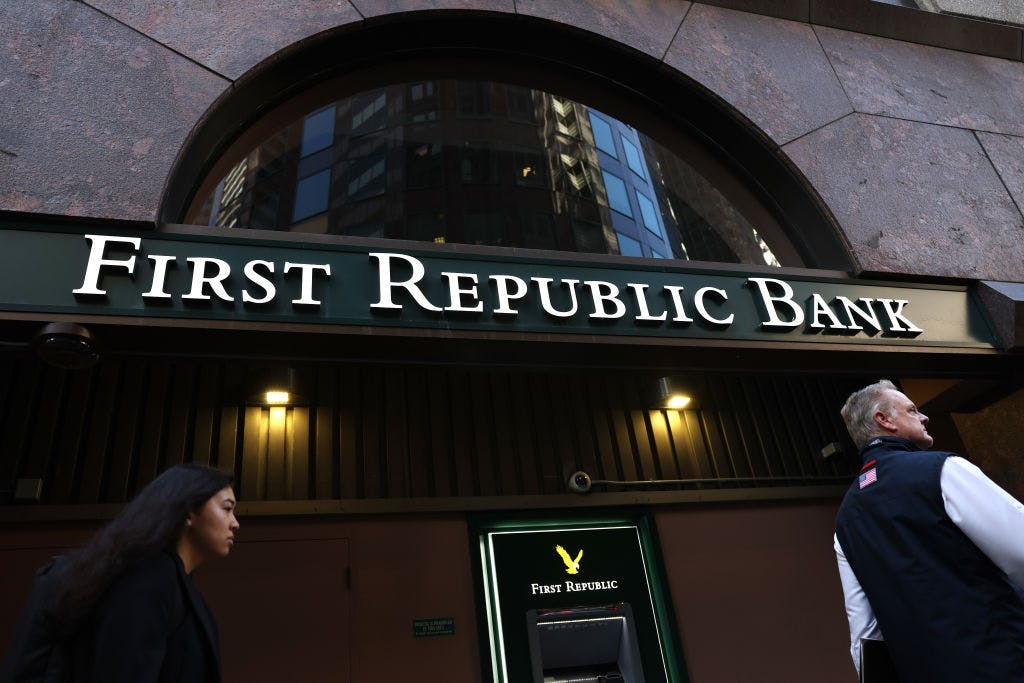JPMorgan Chases Acquires First Republic Bank After Seizure by Regulators
First Republic is the third midsize bank to fail in two months. It is the second-biggest bank failure in American history, behind only Washington Mutual, which collapsed at the height of the 2008 financial crisis.

Regulators seized troubled First Republic Bank early Monday and sold all of its deposits and most of its assets to JPMorgan Chase Bank in a bid to head off further banking turmoil in America.
San Francisco-based First Republic is the third midsize bank to fail in two months. It is the second-biggest bank failure in American history, behind only Washington Mutual, which collapsed at the height of the 2008 financial crisis and was also taken over by JPMorgan.
First Republic has struggled since the March collapses of Silicon Valley Bank and Signature Bank and investors and depositors had grown increasingly worried it might not survive because of its high amount of uninsured deposits and exposure to low interest rate loans.
The Federal Deposit Insurance Corporation said early Monday that First Republic Bank’s 84 branches in eight states will reopen as branches of JPMorgan Chase Bank and depositors will have full access to all of their deposits.
Regulators worked through the weekend to find a way forward before American stock markets opened. Markets in many parts of the world were closed for May 1 holidays Monday. The two markets in Asia that were open, in Tokyo and Sydney, rose.
“Our government invited us and others to step up, and we did,” said the chairman and chief executive of JPMorgan Chase, Jamie Dimon.
As of April 13, First Republic had approximately $229 billion in total assets and $104 billion in total deposits, the FDIC said.
At the end of last year, the Federal Reserve ranked it 14th in size among American commercial banks. The FDIC estimated its deposit insurance fund would take a $13 billion hit from taking First Republic into receivership. Its rescue of Silicon Valley Bank cost the fund a record $20 billion.
Before Silicon Valley Bank failed, First Republic had a banking franchise that was the envy of most of the industry. Its clients — mostly the rich and powerful — rarely defaulted on their loans.
The bank has made much of its money making low-cost loans to the wealthy, which reportedly included Meta Platforms’ chief executive, Mark Zuckerberg.
Flush with deposits from the well-heeled, First Republic saw total assets more than double from $102 billion at the end of 2019’s first quarter, when its full-time workforce was 4,600.
But the vast majority of its deposits, like those in Silicon Valley and Signature Bank, were uninsured — that is, above the $250,000 limit set by the FDIC. And that worried analysts and investors. If First Republic were to fail, its depositors might not get all their money back.
Those fears were crystalized in the bank’s recent quarterly results. The bank said depositors pulled more than $100 billion out of the bank during April’s crisis.
First Republic said that it was only able to stanch the bleeding after a group of large banks stepped in to save it with $30 billion in uninsured deposits.
Since the crisis, First Republic has been looking for a way to quickly turn itself around. The bank planned to sell off unprofitable assets, including the low interest mortgages that it provided to wealthy clients.
It also announced plans to lay off up to a quarter of its workforce, which totaled about 7,200 employees in late 2022.
Investors remained skeptical. The bank’s executives have taken no questions from investors or analysts since the bank reported its results, causing First Republic’s stock to sink further.
And it’s hard to profitably restructure a balance sheet when a firm has to sell off assets quickly and has fewer bankers to find opportunities for the bank to invest in.
It took years for banks like Citigroup and Bank of America to return to profitability after the global financial crisis 15 years ago, and those banks had the benefit of a government-aided backstop to keep them going.
Associated Press
